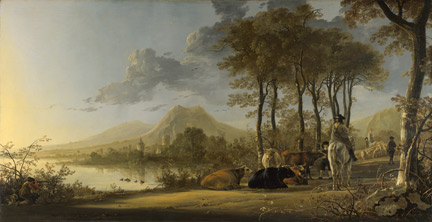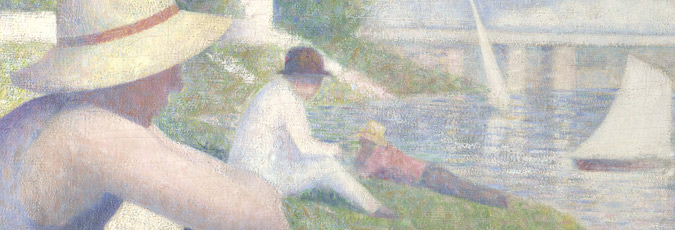An imaginative framework
Creating an imaginative framework within which the storymaking takes place is an important part of the work. It provides the boundaries within which critical evaluations and judgements can take place about whether or not ideas work.
River Landscape with Horseman and Peasants
Aelbert Cuyp's painting, River Landscape with Horseman and Peasants gives a visual starting point for a story. It already has a setting, a character and a sense of destination, with the sweep of the path leading round to the city in the distance.

The distant city lends the possibility of other characters and a potential reason for the journey the man is making. The painter presents a door into an imagined world. Ideas for stories can be discovered through questioning, sharing of narrative possibilities and using drama to step into the painting.
Step into the painting
Get your class to look closely at the painting, noticing what is happening, commenting on the mood and atmosphere of the scene and drawing attention to small details that add to the narrative event.
Discuss the details
Discussing the sounds the man on the horse might be hearing at this moment begins to bring life to the painting. Another option is to create a freeze frame of the painting, where pupils re-enact a scene from the painting.
This is a way of stepping into the landscape, so the painting becomes a world to be inhabited, rather than something to be looked at.
The class could improvise the dialogue between the man on the horse and the boy. What might they have to say to each other? Why might the boy be pointing?

